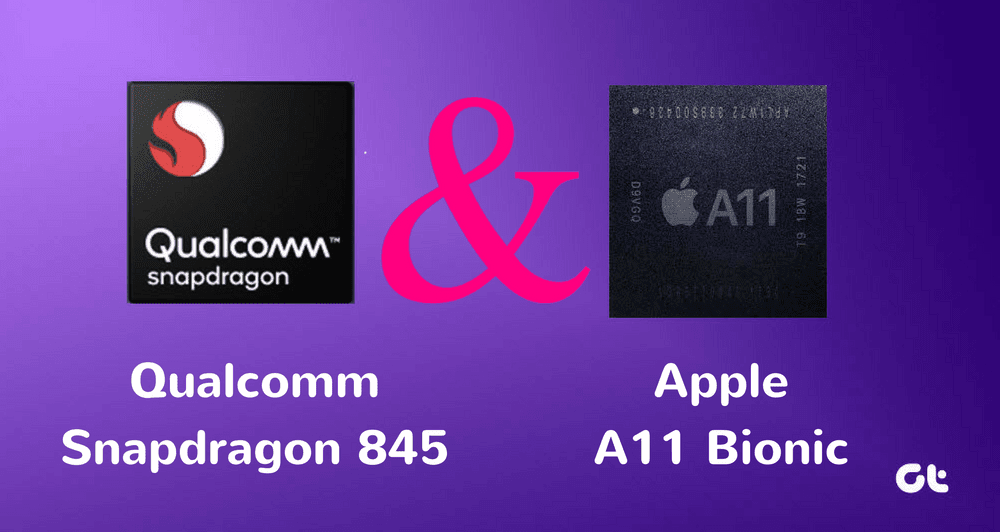While the Snapdragon 625, 630 and 626 are some of the most popular processors, 2017 saw two new additions to the family — the Snapdragon 660 and 636 mobile platform. Seen in the Nokia 7 plus and Redmi Note 5 Pro, these two platforms are now considered the most powerful chipsets in the 600-series. Needless to say, they provide a major boost to performance, gaming, and battery life. For those who are unaware, the Snapdragon 636 replaces the highly popular Snapdragon 630, while the Snapdragon 660 is the substitute for the Snapdragon 653. So, are these just incremental updates that Qualcomm has pushed out, or is there more to them than it meets the eye? Well, let’s find out!
Specifications That Matter
Performance Improvements
The Snapdragon 660 is the highest performing SOC in Qualcomm’s mid-tier range as of now and one of the key areas of improvement is the fabrication process. While the old Snapdragon 653 was developed using the 28nm fabrication process, Qualcomm has bumped up the Snapdragon 660 with the 14nm LPP FinFET process from Samsung. What makes the 14nm fabrication process unique is the improvement in the field of energy efficiency, heat control, and the overall performance. Another highlight is the introduction of the Kryo 260 cores, thus giving an additional boost to the CPU power. In fact, the Snapdragon 660 is the first chipset with Kryo cores, thus making it a bit expensive. The Kryo 260 uses a combination of four 64-bit ARM semi-custom Cortex-A73 ‘performance’ cores clocked at 2.2GHz and four Cortex-A53 ‘efficiency’ cores clocked at 1.7GHz. This cluster of cores offers low latency and improved task-sharing capacities. When it comes to the GPU, the Snapdragon 660 houses an Adreno 512 GPU. This brings the gaming advantage to the Snapdragon 660 as it supports some of the latest graphics APIs such as the Vulkan API. The Snapdragon 636 share almost same specifications as the Snapdragon 660, including the 14-nm fabrication process and Kryo 260 cores. However, what stands out is the clock speed and the GPU. Instead of being clocked at 2.2 GHz, the Snapdragon 636 runs at 1.8Ghz. Plus, with the upgrade in the graphics department, the Snapdragon 660 is a gamer-friendly platform.
Improvements in the Camera Field
When it comes to the camera department, both mobile platforms sport almost similar features. Both the Snapdragon 636 and 660 come with Qualcomm Clear Sight camera features.
Display Resolution
The Snapdragon 660 is optimized for WQHD displays (2560×1600). On the contrary, the Snapdragon 636 can power displays up to 2220×1080. If you look around, most of the mid-range phones now support displays up to FHD+, including the Nokia 7 plus.
Charging Speed
Qualcomm Quick Charge is one of the most sought-after features in smartphones these days. Thankfully, both the Snapdragon 636 and the Snapdragon 660 come with one of the Qualcomm’s latest charging technologies. On papers, with Quick Charge 4.0, you can get a whopping 5 hours of battery life in under 5 minutes while charging a 2750mAH battery unit. Given that most of the phone’s batteries hover around the 2700mAh-3500mAh bracket, hopefully there won’t be a significant leap in the charging time. In reality, though, it remains to be seen whether OEMs will actually enable this feature. Currently, neither Redmi Note 5 Pro nor Nokia 7 plus supports Quick Charge. In fact, even the premium phones such as the Samsung Galaxy S8/S9 do not enable this feature.
Artificial Intelligence
Artificial Intelligence in phones is the talk of the town and thankfully, the Snapdragon 660 and 635 do not disappoint. Both the mobile platforms support Qualcomm’s Neural Processing Engine (NPE) SDK. This SDK works with some of the most popular AI frameworks such as Caffe/Caffe2, and Google’s TensorFlow. In layman’s terms, the inclusion of NPE means that app developers can tap into the API for developing AI-related apps. For instance, a camera app that uses image recognition to put funny filters.
So, to Conclude
The Qualcomm Snapdragon 636 and 660 are similar in many respects, especially when it comes to camera specs and the charging technology. Performance wise, though they appear to be similar, the different clock frequencies and GPU help to push the Snapdragon 660 up the ladder by several notches. Also, if we were to look at the benchmark scores, there is a significant difference between the two. As per a report by GSMArena, the Snapdragon 660 on the Nokia 7 plus managed to score a whopping 141822 points, while the Xiaomi Redmi Note 5 Pro scored 112649 points. In a nutshell, we can say that the Snapdragon 660 is an overclocked version of the Snapdragon 636, with improved graphics. For the gamer in you, a phone powered by the Snapdragon 660 would be the ideal choice. The above article may contain affiliate links which help support Guiding Tech. However, it does not affect our editorial integrity. The content remains unbiased and authentic.















